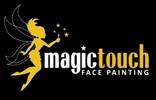Not all face paints are created equal. When you do face painting long enough, you learn the differences between the types. Brands can affect quality, but what’s important is the type of paint that you use. Some are good, some are bad, and some are only smart in specific situations.
If you don’t have the time to experiment – or don’t want to – let us help by breaking them down for you.
Glycerin-based paints are water-activated. They tend to load quickly and are thick on the brush. If you use a sponge, they’re about the same there too. They also take a little longer to try.
They’re best used for dry-blending. If you have a brush handy, you can try wet blending, but it’s not a quick process most of the time. The natural thickness also means they’re not an excellent choice for detail work, so stick to the broad strokes.
Avoid mixing with wax paints, since that makes them rub off more easily.
Wax paints are also a variant. Like glycerin, they’re water-activated. They’re firmer in the cake and can vary a lot in colour. They’re somewhat similar to soft clay, being dry and brittle at first.
They’re quick to load, but you get a thinner coat – think something like watercolours. They dry fast, so you need to be ready for the blending. However, when on the skin, they’re much more durable even if it lacks sweat-resistance. It also has properties that make it suitable for delicate, detail-oriented brushwork.
Powder-based paints will vary based on brand. The variation can be a lot.
The powder is best if you apply a primer first, assuming you’re starting dry. However, this isn’t going to feel too good on the skin if you’re not careful. Glycerin-based paints are a good choice.
The powder blends smoothly, but also very fast. They’re good for working with the eyes or full-face designs, and they hold up better against sweat if you can keep the kids from touching them. However, if there’s any other product on the skin when you apply, it’s easy for things to go wrong.
Cream-based paints don’t need water but take longer to dry. They’re ideal for base work, but the thickness makes them a poor choice for details and delicate brushing.
Finally, there are grease-based paints. These are used by theatre folk and professionals. They’re less frequent outside of those areas because doing detailed work is hard, and they’re much more difficult to use.
